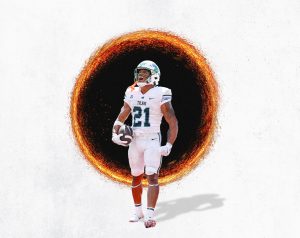Examining portrayals of abortion in television
September 2, 2020

In the 48 years since the first character on American primetime television received an abortion, a lot has changed. Not only was Roe v. Wade ratified, but conversations around bodily autonomy in general are becoming increasingly common in the public discourse. Though portrayals of abortion in popular media, particularly televisions shows, have become more normalized over the past decade, there are still severe deficits in representation.
Perhaps most flagrant in Hollywood’s misrepresentation of abortion is how common barriers are typically overlooked. As of 2019, there was still very little representation of the numerous barriers that a person may confront as they seek an abortion. For many, abortion deserts, or areas in which a person must travel 100 or more miles, are one of the most daunting barriers that they face in their effort to receive an abortion. Given that 27 of the largest U.S. cities are abortion deserts, however, it is likely that many individuals seeking an abortion would reckon with this issue.
Moreover, television shows misrepresent abortion related care on several fronts. Medication abortion, despite being a common procedure used to end first trimester pregnancies, is underrepresented in television while surgical abortion is overrepresented. Another source of overrepresentation is the typical character profile of the patient, namely affluent white women without children. Given television’s motive to create dramatic storylines, perhaps it comes as no surprise that the industry is complicit in overrepresenting negative health outcomes.
While Louisiana is not one of the six states in which there is only one abortion facility, residents still contend with material difficulties in their effort to access the service. This, combined with cultural stigma and socially enforced feelings of shame, may make a person feel unsafe as they seek to receive the procedure. Using the global pandemic as leverage, several states have made abortion more difficult to access by labeling the procedure as nonessential or elective.
Though fictional portrayals of abortion will not impact a person’s ability to pay for services or change the locations of facilities, perhaps they can introduce the public to a more empathetic and medically accurate representation of abortion. Impactful storylines have the capacity to initiate conversations around difficult topics in a way that feels comfortable and non-confrontational. If popular media can inform the public what abortion care looks like and help them understand why a person would seek an abortion, perhaps it will eventually help to dispel some of the myths used to support restrictive measures around abortion.
A more compassionate culture around abortion is possible, and television can help bridge the gap in understanding it.











Leave a Comment